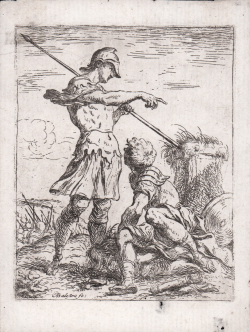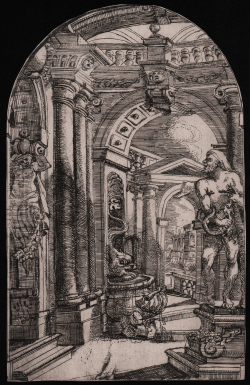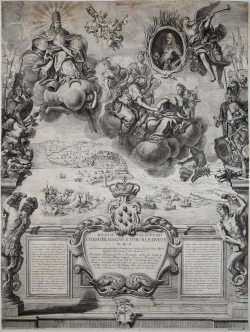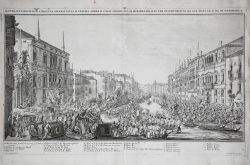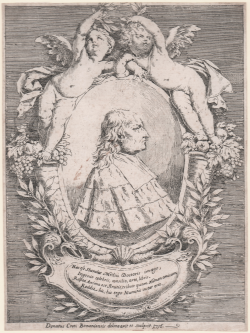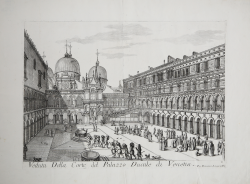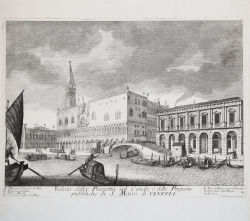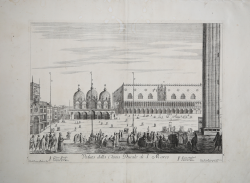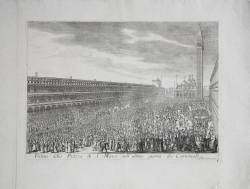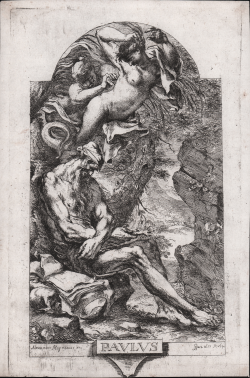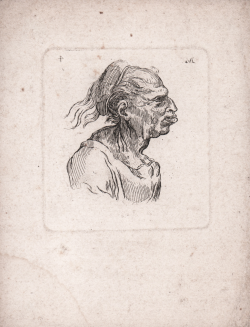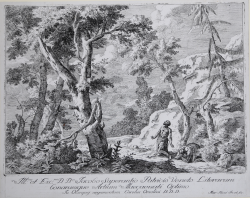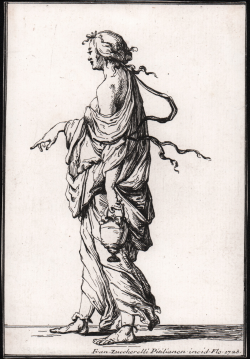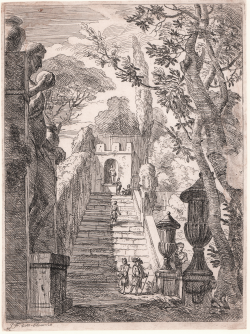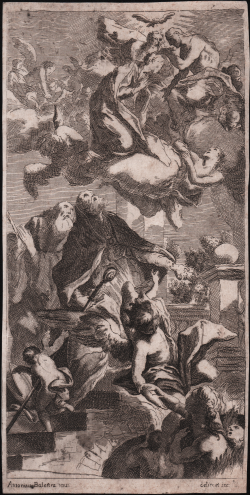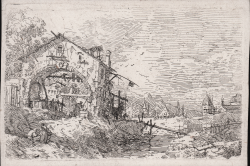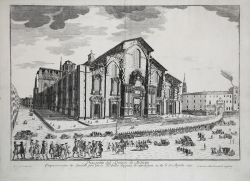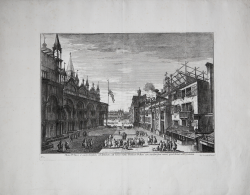Allegory of victories against the Turks by the Order of the Knights...
Hubert VINCENT
Code:
S42911
Measures:
680 x 900 mm
Year:
1704 ca.
Rappresentatzione della regatta solenne fatta in Venezia...
Giuseppe BARONI
Code:
A52127
Measures:
633 x 384 mm
Year:
1709 ca.
View of the courtyard of the Ducal Palace of Venice
Domenico LOVISA
Code:
S5456
Measures:
495 x 365 mm
Year:
1717 ca.
View of the small Square adjacent to the Channel and of the public...
Domenico LOVISA
Code:
S40638
Measures:
470 x 345 mm
Year:
1717 ca.
View of the Ducal Church of St. Mark
Domenico LOVISA
Code:
S5457
Measures:
490 x 345 mm
Year:
1717 ca.
Veduta della Piazza di S. Marco nell'ultimo giorno di Carnevale
Domenico LOVISA
Code:
A52126
Measures:
500 x 362 mm
Year:
1717 ca.
St. Paul of Thebes tempted by a Demon
Bartolomeo GAZALIS
Code:
S44222
Measures:
200 x 320 mm
Year:
1720 ca.
Grotesque head of old woman
Anonimo - Scuola Italiana
Code:
S42274
Measures:
67 x 75 mm
Year:
1720 ca.
Standing female figure walking to the left holding a lamp
Francesco ZUCCARELLI
Code:
S42142
Measures:
122 x 172 mm
Year:
1728
Pictura vetus Architectum exhibens
Giovanni Giuseppe ORAZI
Code:
S50973
Measures:
180 x 230 mm
Year:
1728
Villa Borghese
Jan Frans van BLOEMEN detto "Orizzonte"
Code:
S3757
Measures:
185 x 245 mm
Year:
1730 ca.
Villa Borghese
Jan Frans van BLOEMEN detto "Orizzonte"
Code:
s11848
Measures:
175 x 335 mm
Year:
1730 ca.
Landscape with woman at the fountain
Giovanni Antonio Canal detto CANALETTO
Code:
A50103
Measures:
205 x 135 mm
Year:
1735 ca.
Prospetto del Duomo di Milano e rapresentazione de Funerali fatti...
Marcantonio Dal Rè
Code:
S44210
Measures:
650 x 440 mm
Year:
1735
Platea D. Bassi et suum templum ad dexteram...
Michele MARIESCHI
Code:
A52124
Measures:
427 x 308 mm
Year:
1738 ca.

